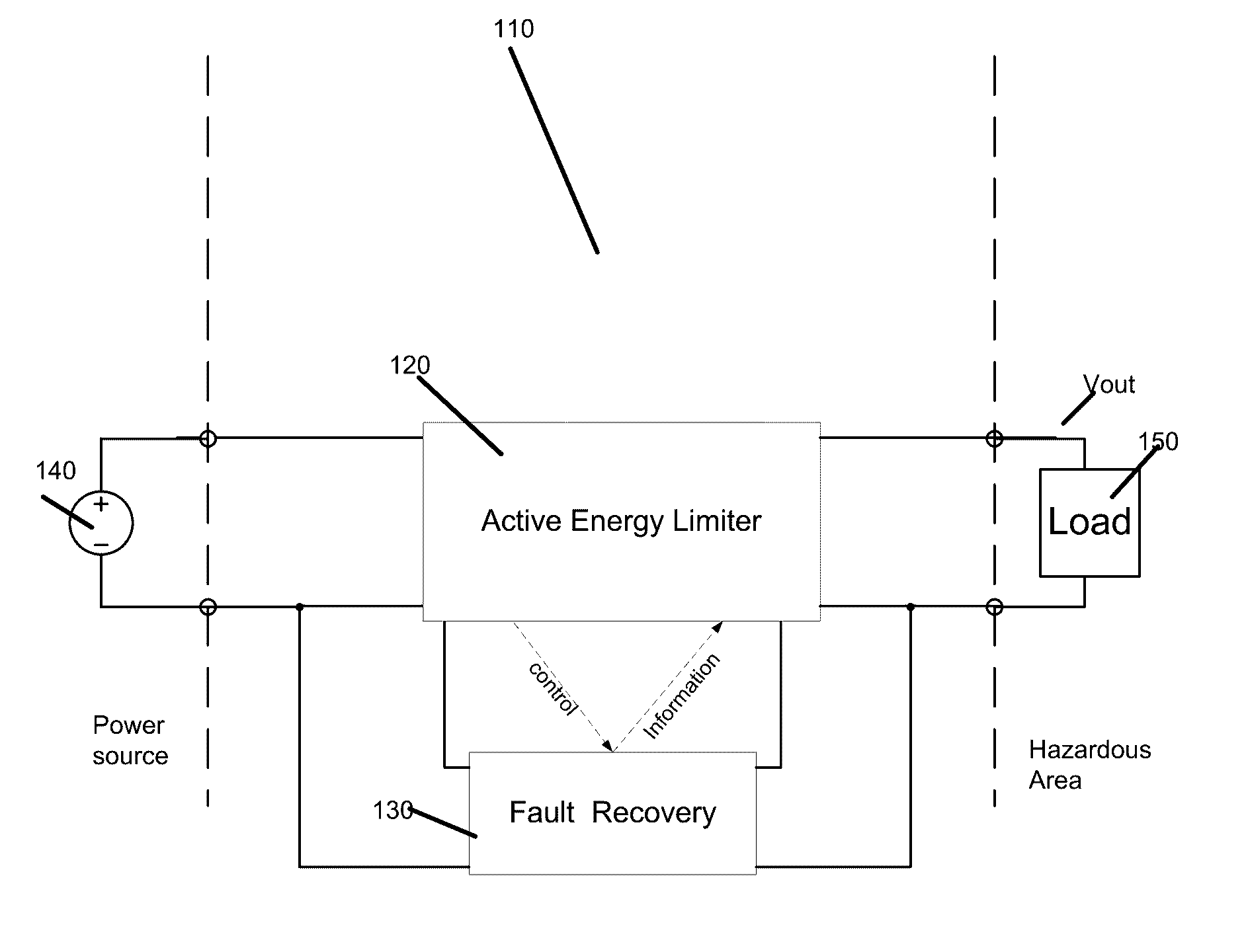Active Intrinsically Safe Circuit
a technology of intrinsically safe circuits and active circuits, applied in emergency protective circuit arrangements, emergency protection arrangements for limiting excess voltage/current, etc., can solve problems such as excess current, energy waste, and circuits that do not create or allow operation above safe limits
- Summary
- Abstract
- Description
- Claims
- Application Information
AI Technical Summary
Benefits of technology
Problems solved by technology
Method used
Image
Examples
Embodiment Construction
[0033]In these descriptions, we may generally refer to voltage, current, or power generically as electrical energy or energy. However, specific applications of active current, active voltage, or active power limitation are contemplated in the embodiments.
[0034]FIG. 1 shows the general concept of an intrinsically safe circuit 110 placed between an electrical energy source and a load 150, where the intrinsically safe circuit 110 is in a hazardous area. An electrical energy source 140 may entail direct or alternating current. A fault recovery circuit 130 is connected generally in parallel so as to be able to monitor and control voltage and current from the source. Together, the active energy limiter 120 the fault recovery circuit 130 comprise the intrinsically safe circuit 110. When a fault arises, such as an over-current or over-voltage condition, the active energy limiter 120 will cut off or otherwise limit voltage or current to the load 150. Thus, the load 150 is protected. After th...
PUM
 Login to View More
Login to View More Abstract
Description
Claims
Application Information
 Login to View More
Login to View More - R&D
- Intellectual Property
- Life Sciences
- Materials
- Tech Scout
- Unparalleled Data Quality
- Higher Quality Content
- 60% Fewer Hallucinations
Browse by: Latest US Patents, China's latest patents, Technical Efficacy Thesaurus, Application Domain, Technology Topic, Popular Technical Reports.
© 2025 PatSnap. All rights reserved.Legal|Privacy policy|Modern Slavery Act Transparency Statement|Sitemap|About US| Contact US: help@patsnap.com



